7 benefits of regular physical activity

How to spring clean your mind
Being a night owl may be hurting you Tips on how to sleep and get up earlier

7 benefits of regular physical activity

How to spring clean your mind
Being a night owl may be hurting you Tips on how to sleep and get up earlier
The thought of pre-planning your final arrangements can be scary and overwhelming at first.
However, taking the action to do so can leave you reassured and relaxed. Choosing the right funeral home and pre-planning your final arrangements in advance has many advantages. Having your final plans in place is not only a sound economic decision but a thoughtful decision for your family. With your wishes documented and funded it relieves your family from the financial pressure and decision-making during this difficult time. Not only will the financial burden of your financial expense not be left to your family to handle but pre-planning your services locks you into today’s prices.
You can pre-arrange the most elaborate services with all details taken care of down to the music and clergy.
You can even write your own obituary. However detailed or basic you would like to be, getting your plans in place is important. Most providers offer free pre-planning services for you to ask questions and gather more information. A well-established funeral home will provide step-by-step guidance throughout the process while pre-arranging your service. The employees should be knowledgeable, professional and caring.

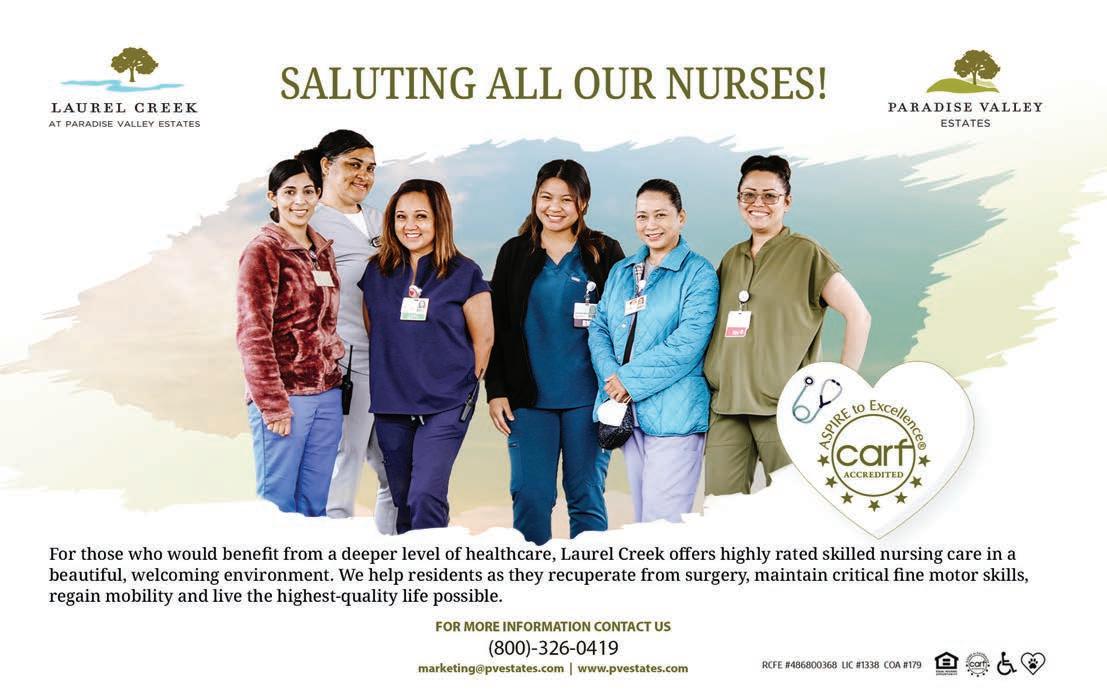
You should feel comfortable asking questions and leave feeling like you have a good understanding of the process. Also consider your options for a final resting place for either cremated remains or casketed remains. The option to pre-purchase your cemetery is available also and can be discussed at your pre-arrangement.
Word of mouth or referrals from family and friends are always a good place to start when choosing your cremation provider. Once you have decided on a funeral provider it is important to let your family know about your prearrangements. This way your family knows who to contact when your time comes. Having these plans in place is one of the more thoughtful gifts you can leave your loved ones, enabling them to grieve without the stress of choosing a provider and planning arrangements.
Life is not so easy for my patients who are night owls.
In the United States, the normative sleep schedule runs from about 11 p.m. to 7 a.m., though this varies with age, gender, geography (latitude and longitude), season and cultural norms.
Night owls are people who are inclined to fall asleep and wake up hours later than the societal norm, and who struggle to adapt to a more typical schedule even with effort. If they go to sleep when it feels most natural, however, they generally fall asleep easily and enjoy sleep of good quality. They may be diagnosed with “delayed sleep-wake phase disorder.”
Lifestyle – for example, late-night light exposure – may contribute to the tendency, but scientists have also identified multiple genetic loci that inform “chronotype,” or the biological disposition toward early, late or intermediate sleep timing. Many night owls have lived with the propensity since at least their teen years. Being a night owl can be costly to physical health, emotional well-being, cognitive function, productivity, financial well-being, self-esteem, relationships and safety. These costs flow from:

• Cumulative sleep loss.
• Having to function in the morning when sleep propensity is still high.
• Frequent counterclockwise adjustments, much like revisiting the
shift to daylight saving time every Sunday night.
• Misalignment between biological rhythm and natural patterns of sunlight and darkness.
• Possible performance or timeliness issues at school, work and home (and perhaps mischaracterization as lazy, inconsiderate or oppositional).
• Needing to jam responsibilities into too few hours.
• Constrained social opportunities.
One of my patients routinely fell asleep around 2 a.m. and felt chronically “in a fog,” he said, because he had to rise early for work. He pressed the snooze alarm repeatedly, diminishing his morning sleep quality. He had been reprimanded for showing up late at work. He
battled depression, though his mood was better when he could sleep at will.
We worked together for a few sessions, and he was able to advance his sleep timing by more than two hours. Here are some strategies that helped him and that may help other night owls. Many people begin to see results in just a few days.
Many of my patients have read about the importance of avoiding screens and blue light late at night. But it’s not just screens and blue lights that delay biological rhythm, and it’s not just late-night exposure that matters.
Light in the early evening mitigates the impact of later light. But it is best to block the short-wavelength (blue) end of the spectrum in the white lights all around us beginning about three hours before the time you hope to program your body to fall asleep. That means beginning at 8 p.m. if you want to fall asleep at 11 p.m.
The sun sets hours before most of us go to sleep, but artificial light sends a continuing “sunlight” signal to our biological clocks. Short-wavelength light contributes most potently because it is preferentially absorbed by the photoreceptive cells in the retina that deliver the weightiest inputs to the biological clock. Short-wavelength light also suppresses the darkness-signaling hormone melatonin.
When short-wavelength lights are blocked, there are still longer wavelengths hitting the retina, so dimming to just above eyestrain level is important.
Even better? Introduce blue blocking and dimming by going outdoors for sunset (to experience natural transitions in wavelength, intensity and solar angle) or simulate sunset indoors with a programmable bulb. (Never look directly at the sun or a bulb.)
You can achieve blue blocking with special glasses that filter out light from at least 400 to 495 nanometers. Orange lenses are more comfortable than red, and good brands include Uvex with the SCT-Orange lens (inexpensive) and Spectra479. Some also
come in clip-on and fit-over styles for those who wear glasses.
You can also use dim, red bulbs or programmable bulbs (RGB are inexpensive; Philips Hue or Wiz and Wyze are more customizable). Apps (such as F.lux) or physical filters from companies such as LowBlueLights can be used for devices.
Minimize use of screens at night; they are still too bright and close-range.
Darkness is ideal after the sleeponset time you aspire to.
Photoreceptors are especially sensitive under dark-adapted conditions and are vulnerable to the effects of sudden light. Also, light obtained hours into our sleep cycles has an outsize impact on the biological clock. Even brief light can alter rhythms.
My patients have also read about the importance of morning light for programming earlier sleep. But most are not aware that light too early can shift rhythm in the wrong direction, as if the sun is still up rather than newly up.
A useful rule of thumb is to obtain the light no earlier than 90 minutes before your currently natural rising time. For instance, if your natural rising time is 11 a.m., you could set the alarm for 9:30 a.m. to get the light. This allows you to safely expose yourself to the light earlier as your natural rising time moves earlier. Light close to natural rising time is beneficial but less impactful than light 60 to 90 minutes earlier.
Outdoor light for 30 minutes is best. If outdoor light is impractical, consider using a commercial light box such as those from Carex, Verilux or Northern Light Technologies for 30 minutes. (Speak with your doctor before using a light box; do not look directly at the light.) Or you can sit near a window with the shades open and lights on while working on the computer for an hour (if medically safe).
As you begin naturally to wake
earlier, obtain the morning light earlier. If you do not naturally wake earlier, try getting up 15 minutes earlier every day or so to get the light that much earlier. When your sleep timing is where you want it, you can cut the exposure duration in half.
Your doctor may recommend shortterm use of melatonin (or an agonist) at very low dose (0.3 or 0.5 mg to mirror biologic levels). It exerts its maximal phase-advancing effect about six hours before currently natural sleep onset. Night owls often take it too late or at too high a dose for optimal effect.
• Move your evening routine, including dinner, earlier.
• Avoid stimulating activity late at night to permit earlier sleepiness.
• Limit caffeine and consume it earlier.
• Don’t forgo relaxation time.
• Exercise early in your biological morning or midafternoon.
• Eat breakfast fairly early in your biological morning.
• Avoid late-night exercise and eating.
• Avoid lengthy and late-day naps.
• Strive for daylight or mild blue enrichment during the day.
Conditions such as sleep apnea, insomnia, ADHD, PTSD and OCD may work against your efforts to fall asleep or wake earlier, but treatments are available. Long-acting sleeping pills may also make it hard to rise early.
For inborn night owls, phaseadvancing strategies like the ones above may need to be deployed repeatedly because sleep rhythm may drift later with the least provocation. Think about whether you might be able to fashion a lifestyle that accommodates your difference so that you are not beholden to strict behavioral regimens and the need to habitually (and unhealthfully) recalibrate your rhythm.
Lisa Strauss, PhD, is a clinical psychologist in private practice in the Boston area. She specializes in sleep disorders.






• Courteous staff available twenty-four seven.






• Over half a century of service with thousands of satisfied customers.








• Three year interest-free before need planning for all budgets.
• Reception room for use at no additional cost.
We are the largest provider of quality services in Solano County. There must be a reason! Call our experienced staff for quotes. •




It’s 7 a.m. on a Thursday morning and NorthBay Health’s new Chief Nursing Officer Heather Resseger, R.N., isn’t in her administration office or meeting with hospital leadership.
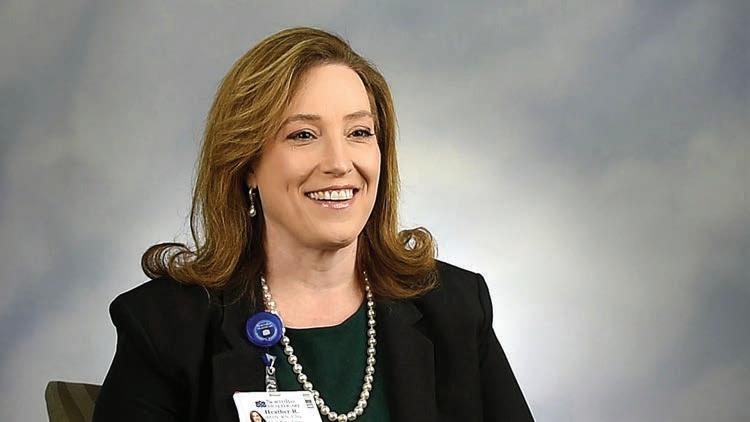
Instead she’s dressed in scrubs and taking part in a morning shiftchange huddle with the nurses in the 1600 and 1700 units at NorthBay Health Medical Center in Fairfield. She listens in as the team goes over safety issues and reviews pertinent patient matters and then addresses the question on most of their minds: Why is the CNO in scrubs and on the unit this morning?
“I know sometimes this can feel like a thankless job,” she tells the nurses. “But I want you to know that we see you, we thank you and we are focused on helping with the care you provide every day.”
Resseger calls it her “In Your Shoes” tour and she’s making it her focus to spend a few hours in every single nursing unit throughout the NorthBay Health hospital system –getting in the trenches with her team to learn their challenges and learn what they need in order to continue to succeed.
“For me, this has been great,” she says. “I’m pumped after I visit the
after all she worked as a nurse in telemetry and intensive care units herself for 20 years. Prior to joining NorthBay Healthcare in 2016, she served as director of nursing operations at a hospital in Oregon, and was director of inpatient nursing at a Santa Rosa hospital before that. She took on the Vice President and CNO role at NorthBay in June 2022.
Still, she has been pleasantly surprised by her visits with the nurses she oversees and what she’s been learning about them in face-to-face conversations. “It’s their various backgrounds and longevity that can be really amazing,” she says.
impacting lives at different levels.”
And, of course, she’s also been getting plenty of feedback on how to improve things within the units: ideas she writes in a notebook for later exploration.
The reaction she gets from the nurses has been positive. “Sometimes they are shy at first but I just start talking to them and asking questions,” Resseger says. “And once they start to talk, the other nurses hear and they join in, too.”
Shanna Durr, R.N., a nursing supervisor in the 1600 and 1700 units, was excited to see the CNO with the staff.
units. It drives me. I love being able to be with the team and see what’s going well and what’s not and where I can help with barriers.”
So far, she says, she has not been surprised by the work of the teams,
As another National Nurse Week approaches (May 6-12) her tour has reminded her of the importance of nursing and renewed her pride in the work nurses do. “Nursing involves a group of dedicated individuals who are there 24/7 really trying to help our patients and families get well,” she noted. “These are not people who just come in, do some tasks and leave. They spend eight to 12 hours of every day really caring for others and
“It’s awesome because anyone who has interacted with Heather knows she’s one of us but it’s really gratifying to see her put on the scrubs and come hang out with us. She is one of us and she’s on our side and she really is trying to help,” Durr said. “She’s trying to get a big picture and she’s trying to understand so she is literally walking the walk and not just talking the talk. And that’s really nice to see.”
‘For me, this has been great. I’m pumped after I visit the units. It drives me.’
— HEATHER RESSEGER
The ripple effects of the Covid-19 pandemic have been studied in recent years, and the National Institutes of Mental Health notes that rates of anxiety, depression and substance abuse disorder have increased since the beginning of the pandemic. Though research into the link between Covid-19 and mental health is ongoing, the NIMH notes that people are more likely to develop mental illnesses or disorders in the months following infection. In addition, people diagnosed with long Covid, which the Centers for Disease Control and Prevention notes is characterized by ongoing symptoms or health problems that can persist for weeks, months or even years after infection, may experience various symptoms related to brain function and mental health. Such symptoms, according to the CDC, may include difficulty thinking or concentrating, headache, sleep problems, lightheadedness when standing up, depression, or anxiety. Individuals who suspect they may be dealing with mental health issues are urged to speak with their physicians immediately. More information about Covid-19 and mental health is available at covid19.nih.gov.















Apair of NorthBay Health registered nurses who are working to attain advanced degrees at Touro University California have each been awarded $15,000 scholarships to help finance their studies.
Camryn Wentworth and Nora Fey are pursuing master’s degrees through the BSN to MSN program in the College of Education and Health Sciences School of Nursing.
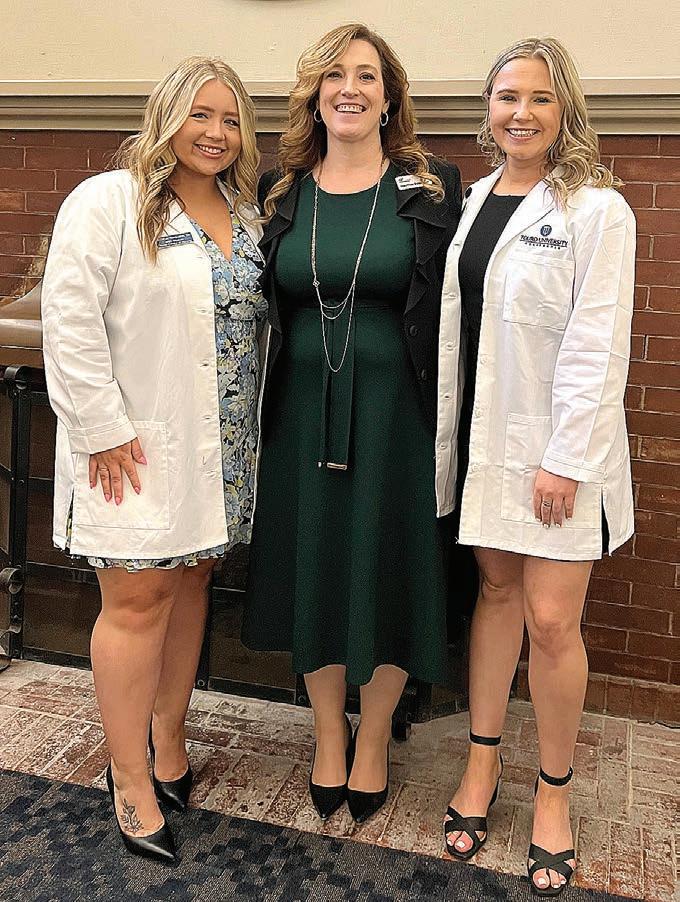
The scholarships were announced March 30 at the Farragut Inn Ballroom at Touro. They are a collaboration between NorthBay Health, Travis Credit Union and Touro University California. The scholarships were open to new BSN to MSN program students who work at least half time for NorthBay Health and have a Travis Credit Union account.
Fey, of Fairfield, is a Clinical Nurse II who works in Labor and Delivery at NorthBay Medical Center in Fairfield, a position she has held since March 2022. Prior to that she worked as a Clinical Nurse I in Labor and Delivery at Good Samaritan Hospital in San Jose.
Wentworth, of Woodland but originally from Solano County, joined NorthBay Health in March 2022 as a registered nurse. She previously worked as a registered nurse with HCA Healthcare’s TriStar Division.
Fey and Wentworth each entered the School of Nursing program this year at Touro and are pursuing master’s degrees in nursing leadership. Both hope to further their careers in management and leadership positions at NorthBay while also serving the greater community.
Fey said she became interested in nursing after attending a NorthBay Nurse Camp at NorthBay Health hospitals while in high school at St. Patrick-St. Vincent Catholic High School in Vallejo, where she served as president of the Future Nurses Club.
She said in her application she hopes to eventually return to her high school and volunteer her time to stu-
dents who are interested in entering the medical field.
mentors who encouraged and sup ported me in the process of applying to nursing school, and it would bring me joy to play that role for prospective nurses,” Fey said in her scholarship application. “I would love to revamp the Nurse Camp program at North Bay to encourage high school students in Solano County to enter the nursing profession. If it wasn’t for NorthBay’s Nurse Camp, I do not believe I would have applied to nursing school. It is my honor to work for this wonderful organization today.”
Wentworth in her scholarship application spoke of the experience she gained working as a nurse during the Covid-19 pandemic and her desire to serve those in need of care.
“This community that I grew up in is very close to my heart. The geographic location of this county is unique,”
Wentworth said in her scholarship application. “We have several extremely diverse socioeconomic areas all within the county and in neighboring counties. I always knew that I wanted to serve tal within it. Working at NorthBay in Fairfield has given me the opportunity
lation and I am very thankful for that laboration between Touro University California, NorthBay Health and Travis Credit Union. Its purpose is to encourage professional development with an eye toward retaining experienced nurses to serve the community.
JoAnn Munski, NorthBay Health’s director of Nursing Education, Clinical Practice and Clinic Informatics, said the scholarship collaboration remains a way for NorthBay Health to promote advanced education within the community and for the community.




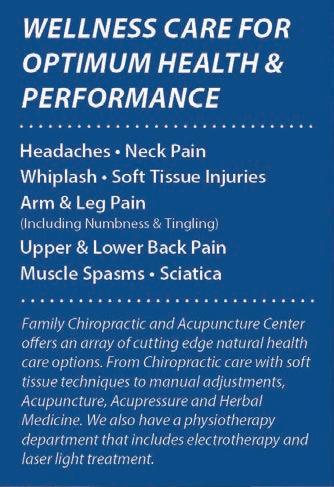


Sun damage from ultraviolent radiation can occur in the eyes. Various eye disease and conditions are linked to UV exposure from being outdoors in the sun or even the use of indoor tanning beds. A condition called “surfer’s eye” can occur from UV exposure. According to the National Eye Institute, pterygium (“surfer’s eye”) is a growth of fleshy tissue that extends from the sclera (white of the eye) to the clear tissue called the cornea, which covers the iris and pupil. It may feel irritating and, if it grows large enough, can cover part of the cornea and affect vision. Pterygium sometimes start as a pinguecula. This is a yellowish, raised growth on the conjunctiva. It usually occurs on the side of the eye nearest the nose. A pinguecula may contain deposits of protein, fat or calcium, says the American Optometric Association. Both pterygium and pinguecula are believed to be caused by a combination of exposure to UV light, wind and dust.

Whether you’re a novice taking the first steps toward fitness or an exercise fanatic hoping to optimize your results, a well-rounded fitness training program is essential.
Fitness training balances five elements of good health. Your overall exercise plan should include aerobic fitness, strength training, core exercises, balance training, and flexibility and stretching. It isn’t necessary to fit each of these elements into every fitness session, but including them in your regular routine can help you promote fitness for life. Exercise and physical activity are a great way to have fun, too.
If you want to feel better, have more energy and even add years to your life, check out these seven ways exercise can lead to a happier, healthier you:
1. EXERCISE CONTROLS WEIGHT.
Exercise can help control your weight, prevent excess weight gain or maintain weight loss. When you take part in physical activity, you burn calories. The more intense the activity, the more calories you burn.
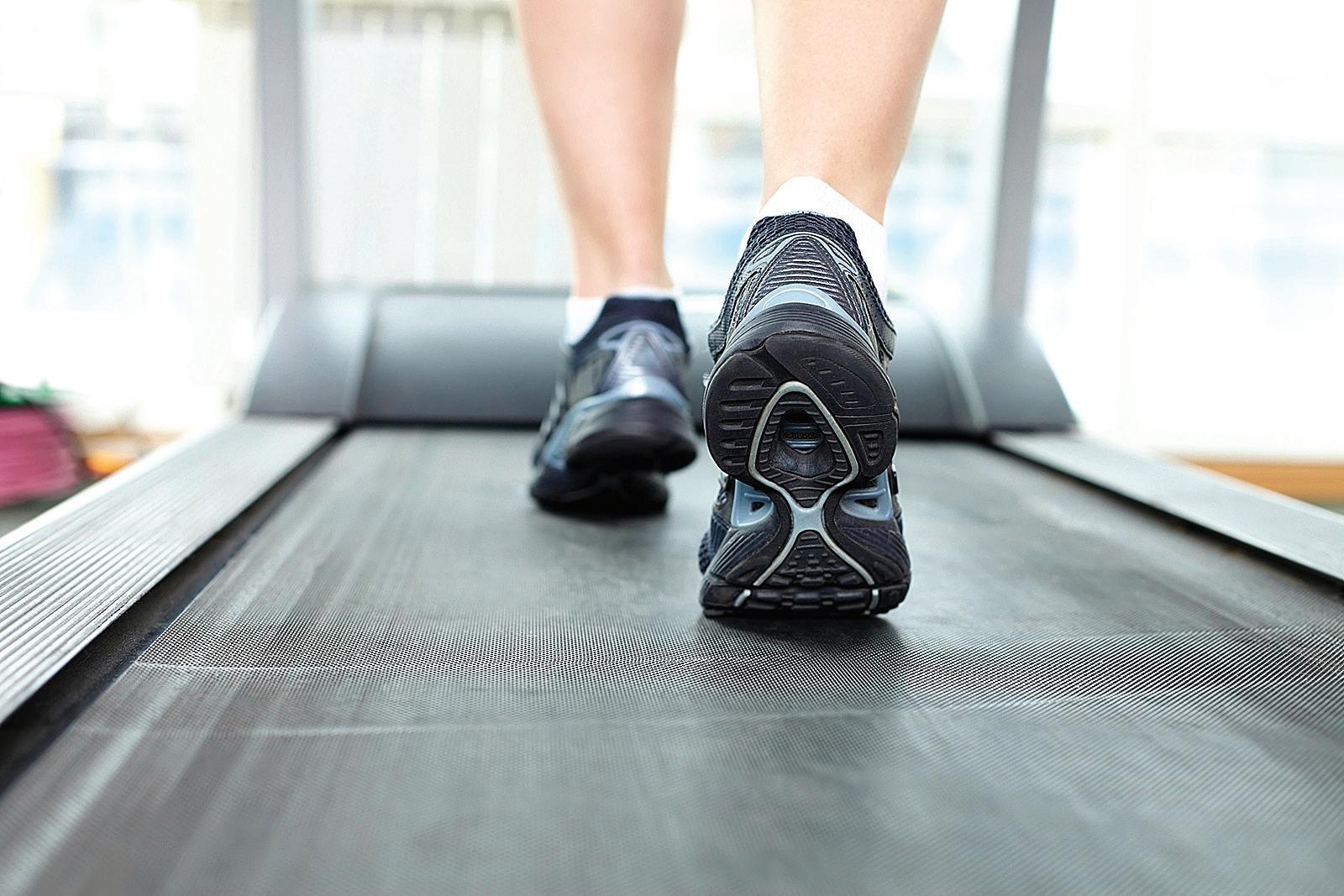
2. EXERCISE COMBATS HEART CONDITIONS AND DISEASES.
Being active boosts high-density lipoprotein, or HDL or “good,” cholesterol, and it decreases unhealthy triglycerides. This one-two punch keeps your blood flowing smoothly, which decreases your risk of cardiovascular diseases.
3. EXERCISE IMPROVES MOOD.
Physical activity stimulates various brain chemicals that may leave you feeling happier, more relaxed and less anxious. You also may feel better about your appearance when you exercise regularly, which can boost your confidence and improve your self-esteem.
4. EXERCISE BOOSTS ENERGY.
Regular physical activity can improve your muscle strength and boost your endurance. Exercise delivers oxygen and nutrients to your tissues and helps your cardiovascular system work more efficiently. And when your heart and lung health improve, you have more energy to tackle daily chores.
5. EXERCISE PROMOTES BETTER SLEEP.
Regular physical activity can help you fall asleep faster, get better sleep and deepen your sleep.
6. EXERCISE PUTS THE SPARK BACK INTO YOUR SEX LIFE.
Regular physical activity can improve energy levels and increase your confidence about your physical appearance, which may boost your sex life. Regular physical activity may enhance arousal for women, and men who exercise regularly are less likely to have problems with erectile dysfunction than men who don’t exercise.
7. EXERCISE CAN BE FUN AND SOCIAL.
Exercise and physical activity can be enjoyable. Exercise gives you a chance to unwind, enjoy the outdoors or simply take part in activities that make you happy. Physical activity also can help you connect with family or friends in a fun social setting.
Magnolia Court by Fields Senior Living is a family-owned company which stems from a thirdgeneration legacy of care. Its unique combination of artfully designed interiors and personalized care was created with seniors in mind. It’s boutique-inspired atmosphere coupled with a commitment to support each individual’s journey is at the heart of what makes Magnolia Court unique.
An extensive remodel in 2020 transformed a traditional community into an elevated living experience –where seniors can enjoy the best while having the freedom
comfort and style.
Residents enjoy beautifully crafted common areas, delicious chef-prepared meals, an active events calendar that includes social events, outings and entertainment, as well as the



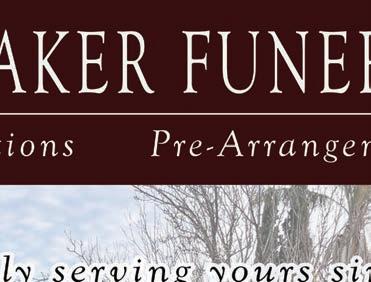

housekeeping and scheduled transportation to shopping and appointments. In essence, they’ve thought of everything to support the art of living well into one’s retirement years.

Magnolia Court has made
wellness a priority by keeping residents active and engaged.
Our team of licensed nurses and care professionals are on duty to ensure the highest standard of assisted living and memory care services. Whether providing personal assistance with bathing, grooming or mobility, or a more extensive care strategy to meet an individual’s needs, Magnolia Court takes pride in offering loving care from trained professionals.

For more information on the programs and services offered, or to schedule a private showing, contact Magnolia Court today.


Thinking about spring cleaning?
The best place to start isn’t the kitchen, garage or closets. This year, try starting with your mind.
By April, most people have all but forgotten the New Year’s resolutions they made four months ago, and many have fallen back into old habits that get in the way of better health and happiness.
But spring is a great time to reset, declutter and recalibrate your mind and goals. Research suggests that spring may be one of the best times to start a new habit or make a change.
Studies show that tying a goal or resolution to a specific day or time of year – such as a birthday, New Year’s Day or the first day of spring – increases the chance of success, a phenomenon known as the “fresh start effect.”
Studies at the Wharton School show that the fresh start effect is particularly strong in spring. In one experiment, people were urged to save for retirement using different “temporal landmarks.” They could start saving right now or pick a future date such as New Year’s, a birthday or the first day of spring. After several months, the people who focused on saving on their birthdays or the start of spring had saved 20 to 30 percent more than the other groups.
Spring is often not an obvious time
for goal setting, said Katy Milkman, professor at Wharton and author of “How to Change: The Science of Getting from Where You Are to Where You Want to Be.”
“But it pops when you point out that it’s the perfect fresh start,” she said. “The season – Easter, Passover, Ramadan – pick your renewal holiday. All of the religions have it pegged, but in regular life without religious prompting we can use it, too.”
Motivation can “wax and wane,” and that’s why, Milkman said, the best fresh starts are tied to a single action with some built-in factor that will help you keep going. Enroll in a 401(k) or a savings plan with automatic deductions. Sign up for a fitness class or gym membership, and you’ll be reminded by the monthly bill.
You can also make fresh starts in small ways.
• Put a notebook on your nightstand and use it to download all your thoughts and worries before you try to go to sleep.
• Commit to scheduling a physical, mammogram or dental appointment.
• Plan a trip – studies show we get a happiness boost just by planning a fun vacation.
• Solve a problem that has been on your mind – organize passwords, start using a financial planning app or sign up for meditation reminders.
• Start reading the book you haven’t
found time to read.
Spring is also a great time to take a personal inventory, said Jack Groppel, an executive coach and professor of exercise and sport science at Judson University in Elgin, Ill. Use these questions to help you tune into your goals and priorities.
• How do you want to be remembered?
• How do you want people to describe you?
• Who do you want to be?
• Who or what matters most to you?
• What are your deepest values?
• How do you define success in your life?
• What makes life worth living?
Write down your answers and reflect on how well you’re achieving your goals.
Groppel notes that your goals and values can shift based on your circumstances. For instance, his priorities changed once he adopted his son. Asking these questions can help you recalibrate and find a new “north star” to help guide decisions and assess if you’re staying on track.
“As we go through life, there are life changes that, for whatever reason, mean we need to ask ourselves those questions again and again,” Groppel said. “Spring is such a good time to reset and say, ‘Okay. We’ve come out of the dormancy of winter, and it’s time to take a look at this.’”



METRO SERVICES
Mental health disorders are more common than people may realize. According to the National Alliance on Mental Illness, one in five adults in the United States experiences mental illness each year. In addition, the Canadian Mental Health Association reports one in five Canadians will experience a mental health problem or illness in any given year. Such data indicates that mental health issues do not discriminate. Indeed, anyone, regardless of who they are or where they live, can experience a mental health problem or illness.
The NAMI notes that mental health conditions are not the result of a single event. Researchers have linked mental health conditions to genetics, environment and lifestyle. Mental health conditions also can be as different as the people who experience them, which

is why it can benefit anyone to learn about some notable disorders and how to spot them.
The NAMI reports that anxiety disorders are the most common mental health concern in the U.S., affecting more than 40 million adults across the country. Though there are various types of anxiety disorders, they all share on unique characteristic: a persistent and excessive fear or worry in nonthreatening situations. Emotional symptoms of anxiety disorder include feelings of apprehension or dread; feeling tense or jumpy, restlessness or irritability; and anticipating the worst and looking out for signs of danger. Physical symptoms may include a pounding or racing heart and shortness of breath; sweating, tremors and twitches; headaches, fatigue and insomnia; and upset stomach, fre-
quent urination or diarrhea.
Bipolar disorder produces dramatic shifts in a person’s mood, energy and ability to think clearly. Bipolar disorders causes extremely high (mania) and low (depression) moods. The NAMI reports that 83% of bipolar disorder cases are classified as severe. During an episode of mania, a person may rapidly become more irritable and their behavior more unpredictable. As a result, their judgment is impaired, which can contribute to impulsive, reckless decision-making. During a depressive episode, people may have difficulty falling and staying asleep, though some may sleep much more than is usual. The NAMI also notes that even minor decisions like what to eat for dinner can seem overwhelming during a depressive episode.







PTSD affects about nine million people in the U.S., while Statistics Canada reports roughly 10% of women and 6% of men meet the criteria for PTSD in Canada. Traumatic events like accidents, assaults or serving in combat can create shortor long-term responses, and in the latter instance individuals may be diagnosed with PTSD. Symptoms of PTSD are wideranging, but the NAMI notes they are typically classified in these categories:
• Re-experiencing type symptoms: These may be marked by recurring, involuntary and intrusive distressing memories, which can include flashbacks and bad dreams.


• Avoidance: Individuals with PTSD may find themselves avoiding places or objects that remind them of the traumatic event.

• Cognitive and mood symptoms: Trouble recalling the event, negative thoughts about oneself, guilt, a feeling of numbness, and worry are some examples of symptoms in this category.









• Arousal symptoms: Hypervigilance that can cause individuals to be intensely startled by stimuli that resembles the trauma is an example of an arousal symptom.
No one is immune to mental health disorders. More information about these and other conditions is available at nami.org. Individuals who feel as though they are experiencing a mental health issue are urged to contact a physician immediately.




The National Institute on Aging defines Alzheimer’s disease as a brain disorder that slowly destroys memory and an individual’s ability to think. The majority of individuals diagnosed with Alzheimer’s disease are 60 and older, which can give the impression that the disorder is exclusive to the elderly. However, younger adults are not immune to the disease, and a small percentage of individuals under 60 could be diagnosed with early-onset Alzheimer’s.
The prevalence of early-onset Alzheimer’s (sometimes referred to as
“young-onset Alzheimer’s”) is unknown. However, early-onset Alzheimer’s can affect every aspect of a young person’s life, including their relationships, finances and ability to live independently. Such consequences underscore the significance of greater recognition of the condition and what it entails.
The experts at Johns Hopkins Medicine note that Alzheimer’s disease is the most common form of dementia and it most often affects older individuals. But in rare cases individuals under

60 can develop Alzheimer’s, and Johns Hopkins notes such instances generally affect people in their 40s and 50s. Most types of early-onset Alzheimer’s disease are the same, but cases may be categorized as common or genetic Alzheimer’s.
• Common: Johns Hopkins notes that most people with early-onset Alzheimer’s have the common form of the disease, which progresses in much the same way as it does in older individuals.
• Genetic: In rare cases, a young person may be diagnosed with genetic, or familial, Alzheimer’s. The United Kingdom-based Alzheimer’s Society notes that this is caused by genetic
mutations that run in families. The risk that this mutation will be passed from parents to children is 50%. Individuals who develop genetic Alzheimer’s typically have lengthy family histories of the disease and may know several relatives, in addition to a parent, who were affected at a similar age.

Though people who develop early-onset Alzheimer’s disease are most likely to be diagnosed with the common form of the condition, family history of the disease remains the only known risk factor.
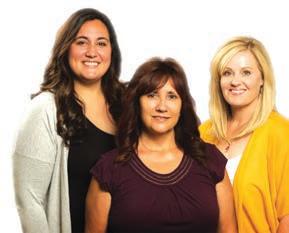

The Alzheimer’s Association notes that health care providers do not generally look for Alzheimer’s in young people, which can make the process of diagnosing the condition long and frustrating. Symptoms are often attributed to other factors, such as stress. However, Johns Hopkins reports that the presence of these symptoms could indicate a person is in the early stages of early-onset Alzheimer’s:

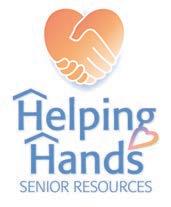


• Forgetting important things, particularly newly learned information or important dates

• Asking for the same information again and again
• Trouble solving basic problems, such as keeping track of bills or following a favorite recipe
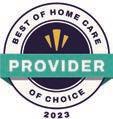
• Losing track of the date or time of year
• Losing track of where you are and how you got there
• Trouble with depth perception or other vision problems
• Trouble joining conversations or finding the right word for something
• Misplacing things and not being able to retrace your steps to find it
• Increasingly poor judgment

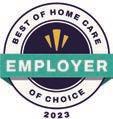

• Withdrawal from work and social situations
• Changes in mood and personality
Symptoms such as memory loss and behaviorial changes, including severe mood swings, are some of the signs that present as early-onset Alzheimer’s progresses.
Early-onset Alzheimer’s is a rare disorder. But its effects can be just as significant as forms of the disease that affect older individuals.
Chronic kidney disease is more common than people may realize. The organizers behind World Kidney Day indicate that roughly one in 10 people across the globe have CKD, which can develop at any age.
The prevalence of CKD underscores how significant a threat it poses to the general public. In addition to its impact on public health, CKD also exerts a financial strain on countries across the globe. For instance, a recent report from NHS Kidney Care in England indicated the costs associated with kidney disease in that country outnumber expenses for cancers of the breast, lung, colon and skin combined. Across the pond in the United States, annual costs to treat CKD are estimated to be around $48 billion.
Many instances of CKD are not preventable. However, these three tips can help anyone reduce their risk for CKD.
The National Institute of Diabetes and Digestive and Kidney Diseases indicates that individuals are more likely to develop kidney disease if they have diabetes, high blood pressure, heart disease, and/or a family history of kidney failure. Annual physical examinations can indicate if blood pressure levels are high and help to determine if a person is prediabetic. Prediabetes does not mean a person has type 2 diabetes, but the Centers for Disease Control and
Prevention notes that, without intervention, prediabetes is likely to become type 2 diabetes within 10 years. Individuals also can speak with older relatives to determine their family medical history and whether or not it includes individuals with kidney disease.
The NIDDK reports that early kidney disease may not produce any symptoms. As a result, testing may be the most effective way to determine if your kidneys are healthy. Health care providers will determine the frequency of testing, which typically involves blood

and/or urine tests.
The NIDDK recommends individuals ensure less than 10 percent of their daily calories come from added sugars. In addition, reducing sodium consumption and focusing on heart-healthy foods, such as fresh fruits, vegetables, whole grains, and low-fat dairy products, can help individuals maintain a healthy weight and blood pressure, thus reducing their risk for kidney disease.
Kidney disease is a significant threat to public health. Individuals concerned about CKD can employ various measures to reduce their risk.
Stress poses a significant public health problem. Though work is often cited as a primary cause of stress, in 2022 socioeconomic issues contributed to a spike in stress levels, which serves as proof that there’s no shortage of potential stressors.
According to the Stress in America Survey 2022 from the American Psychological Association, 81% of respondents indicated they were stressed out due to issues affecting the supply chain. Inflation proved even more troubling, as 87% of participants in the survey indicated they were stressed out by the rising cost in living. That’s especially noteworthy, as it marked a nearly 30% increase from the year prior.
Stress is more than an inconvenience. Though the APA notes the human body is well-equipped to handle stress in small doses, chronic stress poses an entirely different problem, affecting various parts of the body.
The APA reports that muscle tension
is almost a reflex reaction to stress. However, muscle tension for long periods of time can trigger a host of problems, including tension-type headache and migraine headaches, which are each associated with chronic muscle tension in the shoulders, neck and head. The APA notes that work-related stress in particular has been linked to musculoskeletal pain in the lower back and upper extremities.
Stress can present problems affecting the respiratory system as well. Shortness of breath and rapid breathing can occur when a person is feeling stress. Though the APA acknowledges this is often not a problem for people without respiratory disease, the group notes it can exacerbate breathing problems for people with preexisting respiratory conditions, including asthma and COPD.
Chronic stress can contribute to long-term problems affecting the heart and blood vessels, which the APA notes
are the two elements of the cardiovascular system that work together to provide nourishment and oxygen to the body’s organs. Chronic stress has many hallmarks, including a consistent and ongoing spike in heart rate. As a result, long-term ongoing stress increases a person’s risk for an assortment of cardiovascular problems, including hypertension, heart attack and stroke.
The APA notes that hundreds of millions of neurons in the gut are in constant communication with the brain. This is why feelings of nervousness or anxiety often produce the sensation of butterflies in the stomach. When a person is dealing with chronic stress, that can affect communication between the gut and brain, potentially leading to pain, bloating and other discomfort in the gut.
Stress is a public health problem that affects people from all walks of life. Individuals feeling excess levels of stress are urged to speak to their physicians and visit apa.org for more information.

Maintaining physical and mental health often requires a multifaceted approach. Eating well, exercising and reducing stress are part of a healthy regimen, but those are not the only components of a healthy lifestyle.
Hobbies can have a positive effect on overall health. Hobbies can seem like ways to simply pass the time or alleviate boredom. But a deeper exploration could shed light on just how healthy hobbies can be. In fact, it is essential to carve out time for hobbies because they can be so beneficial.
According to a study published in Aging Clinical and Experimental Research, participation in leisure activities positively influences self-perceived well-being and depressive symptoms. “The blue zone” refers to the areas of the world that have the longest-living people on the planet, which include Okinawa, Japan; Sardinia, Italy; and Ikaria,
Greece, among others. Participation in activities that bring out a creative side leads to an increased sense of well-being that is good for long-term health. They also can reduce cortisol levels. Cortisol is known as the stress hormone, and it can negatively affect energy, mood and sleep.
While most leisure activities regularly engaged in can have positive effects on health, those that focus on a combination of physical and mental stimulation are most beneficial. Women looking to change their daily routines may want to focus on these health-boosting hobbies.
• Dancing: Laugh, sweat and learn some footwork in a dance class. It can make exercise fun for those who find traditional exercise does not keep their attention.
• Kayaking: There’s something serene about being on the water away from the hustle of life on land. Kayaking strengthens the body, but the calm of taking in the water and scenery nourishes the mind. Experts agree that outdoor hobbies add

another benefit since sunlight helps the body release neuroreceptors that trigger more positive thoughts.
• Gardening: Gardening is physical, requires planning, involves spending time outdoors, and yields tangible results through thriving plants. These are all factors that promote good health.
• Fostering animals: Fostering animals offers them an opportunity to spend time in domestic settings before being adopted by permanent owners. For the foster person, having a dog involves going out on walks and play sessions in the backyard. A sense of purpose comes from helping out needy animals, and this hobby also taps into physical wellness.
• Volunteering: Being a presence in your community can foster social engagement and boost emotional health. It also can keep you physically active.
Various hobbies can be good for the mind and body, which makes it worth anyone’s effort to make more time for recreation and leisure.
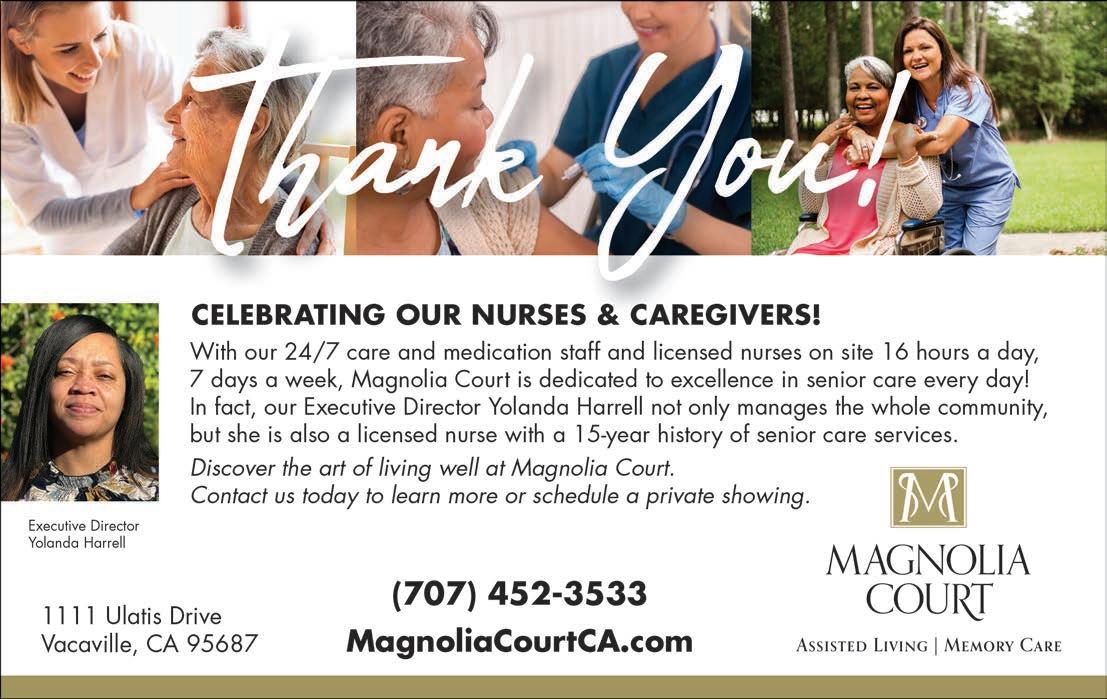

Hypertension, a condition marked by abnormally high blood pressure, is more common than many people may recognize. A 2021 report from the U.S. Department of Health and Human Services indicated that nearly half of adults in the United States, or roughly 116 million people, have hypertension. And hypertension isn’t exclusive to Americans, as the World Health Organization notes that the number of people living with the condition has doubled to 1.28 billion since 1990.
Despite its prevalence, hypertension is not normal, nor is it something to take lightly. In fact, the American Heart Association notes that, if left undetected or uncontrolled, hypertension can lead to an assortment of serious, and potentially deadly, conditions, including heart attack, stroke, heart failure, and kidney disease.
Since the threat posed by high blood pressure is so significant, it’s imperative that individuals know what to do upon being diagnosed with hypertension. The AHA notes that individuals diagnosed with hypertension can try various strategies to get their number down to a normal, healthy range.

• Eat a healthy, low-salt diet. A diet that’s rich in fruits, vegetables, whole grains, low-fat dairy products, skinless poultry and fish, nuts and legumes, and non-tropical vegetable oils ensures people are getting ample nutrition from healthy sources. The DASH (Dietary Approaches to Stop Hypertension) eating plan is designed specifically to help people manage their blood pressure and emphasizes limiting salt, red meat and foods with added sugars, including sweets and sugary beverages. It’s important that all people, and especially those with high blood pressure, limit their salt intake, as sodium is known to increase blood pressure.
• Avoid excessive alcohol consumption. The AHA notes that excessive alcohol consumption can raise blood pressure. In addition, despite what popular misconceptions may suggest, there is no evidence to suggest that red wine consumption is good
for heart health. Like other alcoholic beverages, red wine should be consumed in moderation, if at all. The AHA urges individuals to limit their alcohol intake to no more than two drinks per day for men and no one more than one drink per day for women.
• Exercise regularly. Routine exercise benefits the heart in myriad ways, including helping people control high blood pressure. Individuals recently diagnosed with high blood pressure who are unaccustomed to physical activity should work with their physicians and a personal trainer to design an exercise regimen that’s within their abilities. As their bodies get used to increased physical activity, people can then work with the same individuals to tweak their routines so they can keep making progress toward their fitness goals. Routine exercise also helps to reduce stress, which the AHA notes is another step people with hypertension should take to lower their blood pressure.
• Shed extra weight. Each of the aforementioned strategies can help people shed extra weight, which is another step the AHA recommends for people with high blood pressure. The AHA notes that losing as few as 10 pounds can help to manage high blood pressure. Maintaining a healthy weight also reduces strain on the heart, thus lowering the risk for high blood pressure and the conditions that can arise from it.
More than 1.2 billion people across the globe are currently living with high blood pressure. Taking steps to reduce hypertension is a great way to promote long-term health and overcome this often silent killer.
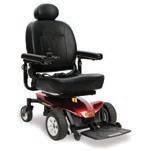


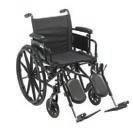

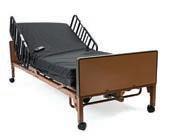


Growing older doesn’t mean closing the book on adventures. At Rockville Terrace, we offer ample amenities to ensure your loved one’s needs are always met. Our amenities include a luxury dining experience, extensive library room, theater room, daily activities, full-service salon and spa, and much more.


Services:






